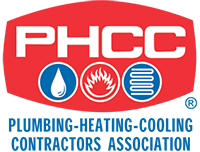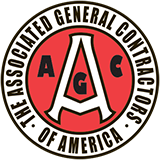 An increase in utility bills can be frustrating if you’ve been operating on a tight budget. This is especially true if you’ve gone out of your way to curb heating and cooling activity to keep those seasonal costs in check. It may be helpful to consider some structural issues as you look for solutions to rising energy usage, and checking for air leaks is a good starting place.
An increase in utility bills can be frustrating if you’ve been operating on a tight budget. This is especially true if you’ve gone out of your way to curb heating and cooling activity to keep those seasonal costs in check. It may be helpful to consider some structural issues as you look for solutions to rising energy usage, and checking for air leaks is a good starting place.
Air Sealing and Insulation Improvements
A leak can promote energy loss and poor energy efficiency. There are some common areas to evaluate, including doors, windows and other breaches in your exterior walls. These areas may appear to be sealed, but caulk and weather stripping can deteriorate over time, leading to cracks and fresh air leaks. It’s wise to inspect these areas at least once a year so that fresh sealants can be used to replace cracked materials.
An additional issue to examine is your attic insulation. If your attic’s floor joists are visible above the insulation, supplemental material may be warranted. However, you don’t want to completely fill the area as this can impede the proper ventilation of your attic and lead to more serious problems with both utility bills and your roof. Ventilation above the insulation allows your roofing system to stay cooler, keeping your home from overheating during hot weather and preventing issues like ice dams during the winter. Verify that your attic vents and vented soffits aren’t blocked as you consider the role your attic may play in your rising energy costs.
According to Energy Star recommendations, a combination of air sealing and supplementing your insulation can trim as much as one-tenth from your HVAC operating costs. A cool roofing system can improve your energy consumption for heating and cooling by another 15 percent. However, it’s important to note that these issues don’t generally change dramatically. A significant hike in your bills may have another cause.
Ductwork and Energy Loss
With central AC and heating, your ducts play a critical role in home comfort. However, a great deal of heating and cooling energy can be lost through duct walls. Additional energy can be lost through leaks, holes or poor connections in your ductwork. These air leaks can add between 20 and 40 percent to your cost to moderate temperatures in your residence, making it important to monitor their condition periodically.
A duct inspection can provide your HVAC contractor with an overview of the extent of such damage. Recommendations may be made for repairs and sealing. Additionally, your contractor may suggest duct cleaning if a significant buildup of dirt and debris is noted. Blockages in your ductwork can lead to problems with your equipment operation, potentially causing increased energy usage. While leaks may gradually worsen, a blockage could occur abruptly, leading to a more extreme change in your energy consumption.
Monitoring Your HVAC Equipment
One of the best ways to minimize problems and improve energy efficiency with your HVAC system is to schedule seasonal maintenance services. If you’ve never had a tune-up performed on your air conditioner or furnace, you may be experiencing poor energy performance due to years of dirt building up on interior components of your system. A tune-up allows your technician to clean these parts so that a more efficient exchange of energy can occur.
A layer of dirt on your indoor AC coils can cause as much as a 20 percent increase in energy consumption to cool your home. Dirty heat exchangers can impede the energy efficiency of your furnace. Poor lubrication of moving parts can affect the strength with which your airstream is moved throughout the house. Additionally, dirty coils can restrict airflow. An optimized system can make a dramatic difference in the quality of temperature control in your home while minimizing the energy used in the process.
Consider a Home Performance Evaluation
If your costs are rising in spite of your efforts to seal leaks, service your ducts and maintain your HVAC equipment, you may want to think about a comprehensive evaluation of your home’s energy usage. Your HVAC contractor will provide feedback about your system and additional issues that may be affecting your bills. He may provide both equipment recommendations and home management strategies to minimize your costs.
Age and Condition of Your Equipment
It’s important to remember that normal wear and tear will lead to the eventual need to replace your equipment. An air conditioner’s average lifespan is about 14 years, and a furnace can last for up to 30 years. This can be affected by your usage patterns and your maintenance efforts. A dramatic change in your utility bills may be connected to the deterioration of your system, and your contractor can help you in evaluating the benefits of repair or replacement.
Replacing a system that is nearing the end of its expected life of service may prove beneficial as your modern equipment options will provide much better efficiency levels. In some cases, the savings on energy bills can pay for a new system’s purchase and installation in just a few years of operation.
The team at Bruce Thornton Air Conditioning, Inc., is prepared to assist with diagnostic services, maintenance plans and estimates as needed. We are available for emergency service on a 24/7 basis, ensuring that your urgent HVAC needs are addressed quickly. Call our office to schedule an appointment or to access more information.










